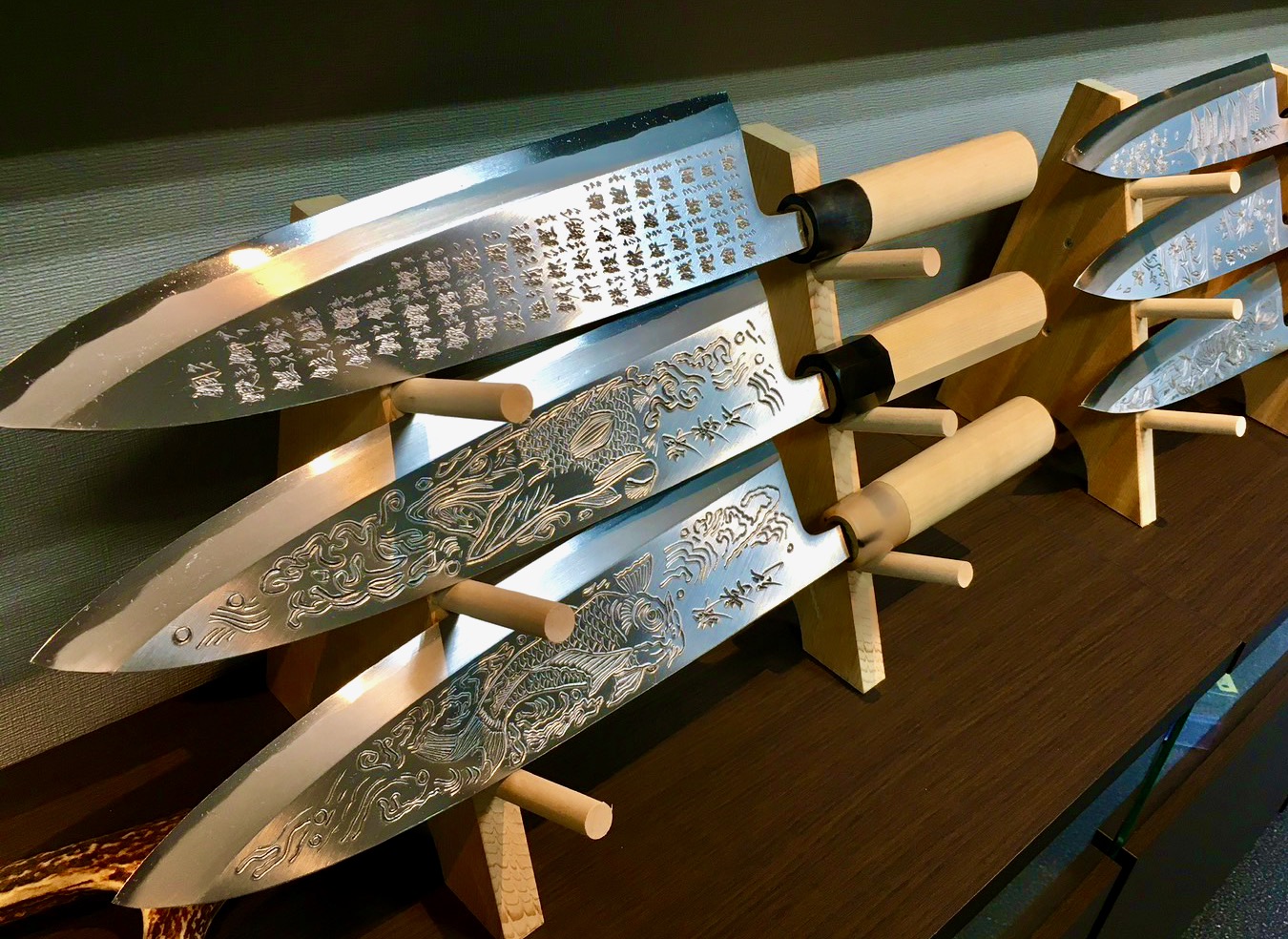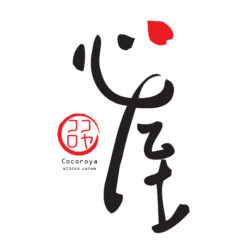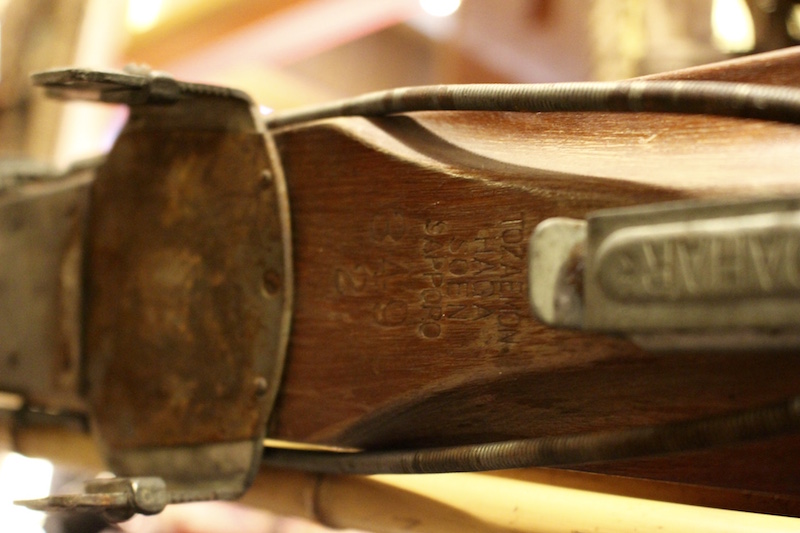History of Skiing in Hokkaido

Hokkaido is the centre of snow sports in Japan and not surprisingly, antique & vintage skis and snow goods are in high demand. Skiing in Japan began just over 100 years ago, not all that long after the Japanese moved up into Hokkaido and began building towns and villages. Prior to that, Hokkaido was populated by the native Ainu people.
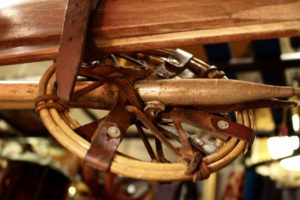 The snowfall in that era was so extreme, that houses would quickly become completely buried in snow, making them impossible to find. Women used to burn fires in front of their simple bamboo houses to help their husbands find their way home. Many locals still in Niseko today still tell tales of trekking to school in blizzards and how some classmates were lost to the elements. The principal would wait each morning at the entrance, hoping that everyone would arrive safely. Snow clearing was not always as good as it is today.
The snowfall in that era was so extreme, that houses would quickly become completely buried in snow, making them impossible to find. Women used to burn fires in front of their simple bamboo houses to help their husbands find their way home. Many locals still in Niseko today still tell tales of trekking to school in blizzards and how some classmates were lost to the elements. The principal would wait each morning at the entrance, hoping that everyone would arrive safely. Snow clearing was not always as good as it is today.
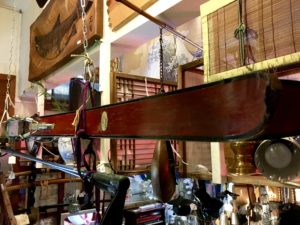 Skiing started in Japan with the army first learning the skill, but it would take some time for it to become a popular pastime. The original technique used only one pole, but this technique was only to be used for a decade or so. Niseko celebrated 50 years of operation as a ski resort in 2011 and it continues to grow annually as an international ski resort.
Skiing started in Japan with the army first learning the skill, but it would take some time for it to become a popular pastime. The original technique used only one pole, but this technique was only to be used for a decade or so. Niseko celebrated 50 years of operation as a ski resort in 2011 and it continues to grow annually as an international ski resort.
Antique and vintage skis, sleds, snow shoes & skates
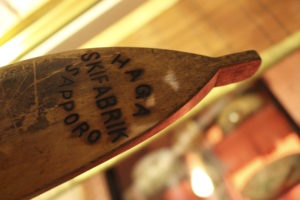
Antique & vintage wooden skis are remarkable on many fronts. The aesthetic beauty of the timber skis themselves make them a lovely object to regard, as do the bamboo poles. With fairly basic leather lace-up boots and simplistic bindings and the typically long skis themselves, it is also remarkable to imagine people using them, especially when comparing them to the advanced engineered technology available today.

Japanese vintage ice skates are unique and also incredible. Ice skating in Japan is reported to have been introduced in 1891 by Inazo Nitobe, a notable scholar and trilingual teacher in Sapporo, after he gained his doctorate in Germany and brought back some western ice-skates. The blades on the skates were adapted for use with the Geta clogs and their popularity grew from there.
Geta clogs are wooden thongs/flip-flops worn only with Tabi mitten-like-socks. Apparently frostbite was not uncommon. People would pause and warm up their feet by fires and then continue. The skates were used both for fun and to get about town on.
Wooden and plastic sleds in Japan are still used by mothers taking their kids around town in the winter and also to transport shopping and heavy items. It is virtually impossible to use a pram or stroller in snow country in the winter, so they are a welcome tool for tired toddlers. The wooden sleds are also beautiful objects with curved timber handles and complete with arm-rests.
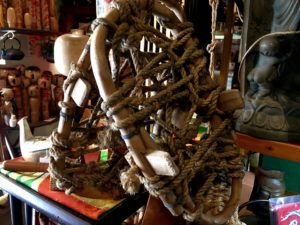 Snow shoes are also beautiful, made from bent timber and bound with rope. Prior to modern-day snow clearing, snow was often piled up and paths compacted from regular use. Shoe shoes were essential for getting about outside.
Snow shoes are also beautiful, made from bent timber and bound with rope. Prior to modern-day snow clearing, snow was often piled up and paths compacted from regular use. Shoe shoes were essential for getting about outside.
HINT: We sell vintage skis, ice-skates, snow-shoes and sleds in our Niseko Store. These items are very popular and are increasingly hard to source. Japan Post have length limits on postal items and vintage skis are generally too long to ship overseas. We recommend checking with your airline on excess baggage and length restrictions prior to purchase. Many airlines allow ski bags and it is often possible to add the vintage skis to your own, if you wish to return overseas with them.
Vintage skis and bamboo poles make an impressive interior wall display mounted at an angle, as do vintage snow shoes. Geta ice-skates are also great interior items.
